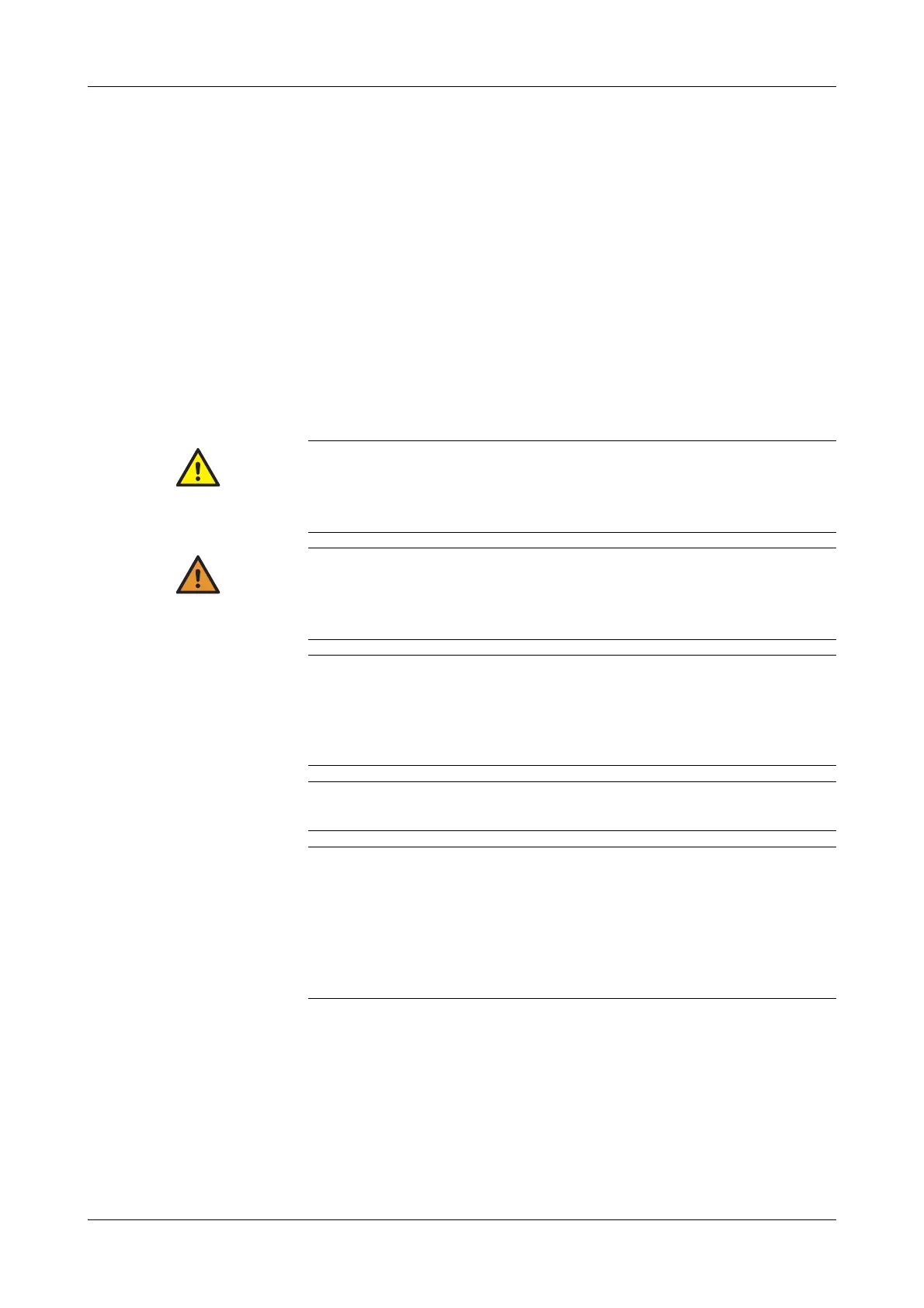Roche Diagnostics
Operator’s Manual · Version 3.1 B-59
Cedex Bio System 5 Daily operation
Performing calibrations
Performing calibrations
e
For an overview on calibration concepts, see Calibration on page A-26.
For performing calibrations in the Prepare phase, see Performing the calibrations (Prepare
phase) on page B-30.
For information on configuring calibration, see Defining calibrator definitions and lots on
page B-150.
Tests with a due calibration are blocked.
e
For validating calibration results see Validating calibration results on page B-64.
Safety information
Make sure that you have read and understood section Safety information on page B-5. The
following warning messages in particular are relevant:
o Injury through reagents and other working solutions on page B-5.
o Infection by biohazardous materials on page B-5.
Skin inflammation caused by reagents
Direct contact with reagents may cause skin irritation, inflammation, or burns.
When handling reagents, be sure to wear protective equipment and observe the cautions
given in the package insert.
Incorrect results due to expired calibration
Calibrations are performed to compensate for changes over time in reagents and in the
measurement systems. Failing to perform calibrations when they are due may lead to
incorrect results.
Make sure to perform calibrations when they are due.
Incorrect results due to wrong tube placement
Be sure to place the calibrators in the specified positions.
Incorrect results due to inappropriate tube and cup placement
Inappropriate tube and cup placement may lead to inaccurate pipetting and consequently
to incorrect results.
Make sure that the primary tubes are placed centrally and perfectly vertically in the holders
in the sample area and that they are inserted firmly.
Make sure that secondary tubes are placed centrally on the primary tubes and that they
rest fully on them.

